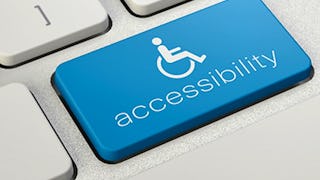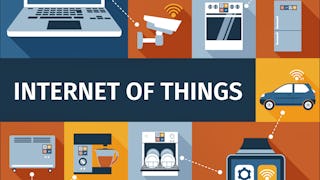This course aims to provide healthcare providers, social service professionals, and caregivers with a comprehensive understanding of smart home technology and how it can be utilized as assistive technology to improve the well-being, independence, and participation for older adults and individuals with disabilities. Students will learn about the different components of a smart home, including the input methods, smart home controllers, and smart home devices. The course will cover major smart home ecosystems, such as Amazon Alexa, Google Home, Apple Home, along with common wireless communication protocols, such as Z-wave, Zigbee, Bluetooth, Wi-Fi, and Thread. The smart home standard Matter will also be introduced.


Skills you'll gain
Details to know

Add to your LinkedIn profile
6 assignments
See how employees at top companies are mastering in-demand skills

There are 5 modules in this course
In this module, we cover the course introduction and an introduction to smart home technology and service delivery. We delve into the dynamic realm of smart technology used to enhance the quality of life for older adults and individuals with special needs by integrating the HAAT model (Human, Activity, Assistive Technology). This module explores the intricate interplay between assistive technology, assistive technology services, mainstream technology, and universal design.
What's included
5 videos4 readings1 assignment
In Module 2, we explore Smart Home Technology. This module illuminates the fundamental elements of a smart ecosystem for individuals with special needs, reviewing the interconnected devices that define modern living. We delve into the intricacies of wireless communication protocols driving smart homes and gain insights into the pressing privacy and security concerns accompanying technology integration into our domestic spaces.
What's included
4 videos4 readings1 assignment
Module 3 focuses on the assessment phase, which guides the selection of appropriate smart home technology. We analyze clients' unique needs and goals as they integrate technology into their homes and lifestyles. This module also considers clients' digital literacy knowledge and skills to identify technology that functions within their comfort level.
What's included
3 videos4 readings1 assignment
In Module 4, we compare diverse smart home devices and platforms to address clients' unique needs. We will learn the strategic nuances of selecting technology with features that enhance usability and discover the transformative potential of integrating routines and automation to amplify the functionality of smart home devices.
What's included
4 videos4 readings1 assignment
Module 5 highlights cognitive strategies designed to elevate client learning and comfort levels during technology training sessions. We will review effective strategies that facilitate the initial adoption of technology and foster sustained use, mitigating the risk of abandonment.
What's included
4 videos8 readings2 assignments
Instructors


Offered by
Explore more from Patient Care
 Status: Preview
Status: PreviewKnowledge Accelerators

28DIGITAL
 Status: Preview
Status: PreviewUniversity of Illinois Urbana-Champaign
 Status: Free Trial
Status: Free TrialUniversity of California, Irvine
Why people choose Coursera for their career





Open new doors with Coursera Plus
Unlimited access to 10,000+ world-class courses, hands-on projects, and job-ready certificate programs - all included in your subscription
Advance your career with an online degree
Earn a degree from world-class universities - 100% online
Join over 3,400 global companies that choose Coursera for Business
Upskill your employees to excel in the digital economy
Frequently asked questions
To access the course materials, assignments and to earn a Certificate, you will need to purchase the Certificate experience when you enroll in a course. You can try a Free Trial instead, or apply for Financial Aid. The course may offer 'Full Course, No Certificate' instead. This option lets you see all course materials, submit required assessments, and get a final grade. This also means that you will not be able to purchase a Certificate experience.
When you purchase a Certificate you get access to all course materials, including graded assignments. Upon completing the course, your electronic Certificate will be added to your Accomplishments page - from there, you can print your Certificate or add it to your LinkedIn profile.
Yes. In select learning programs, you can apply for financial aid or a scholarship if you can’t afford the enrollment fee. If fin aid or scholarship is available for your learning program selection, you’ll find a link to apply on the description page.
More questions
Financial aid available,

